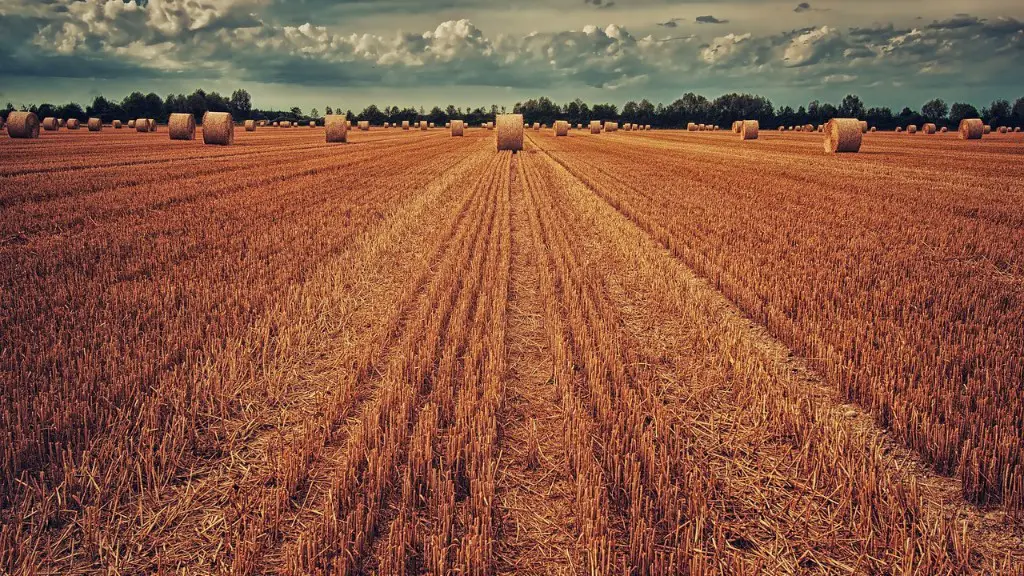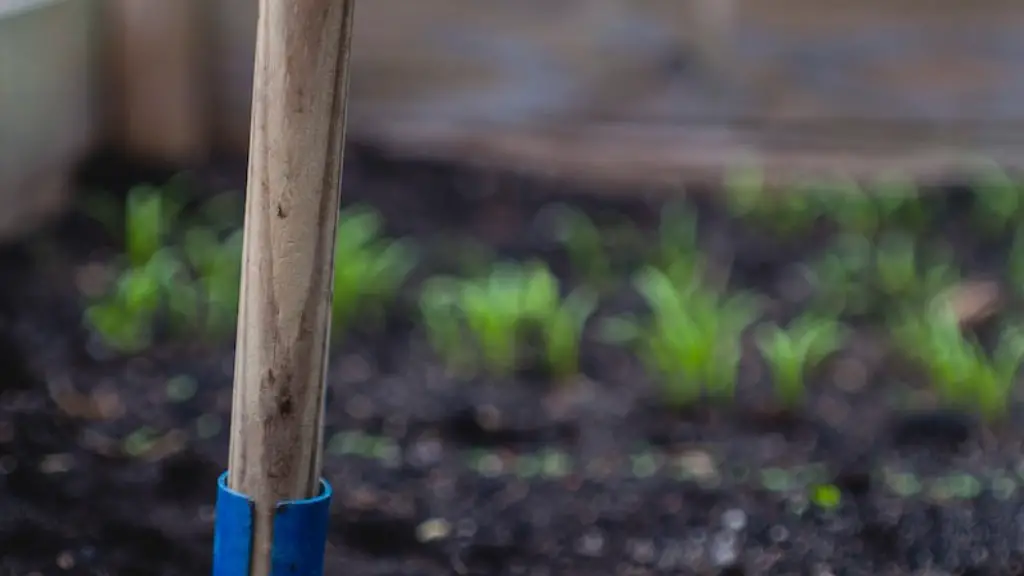A dibber is a garden tool used in agriculture to create holes for sowing seeds. It consists of a handle with a slender shaft, ending in a pointed tip, that is inserted into the ground to create a hollow to put the seed in. The dibber is also versatile and can also be used to dig hardier roots such as carrots. As preparing the soil for planting is an important stage of the agricultural process, the use of the dibber is essential for efficient sowing.
Dibbers come in a variety of sizes, depending on their intended use. While for larger crops such as corn, potatoes and beans a longer handled dibber is more suitable, small dibbers can be used for plants like lettuce, herbs, and flower seeds. The size of the hole that needs to be created and the soil composition should be taken into consideration when choosing the size and type of dibber.
The dibber provides a more accurate method of planting seeds than scattering them over the soil and allows for space to be given between the sown plants, which is important for crop rotation and larger space for the plants to grow. It also reduces soil erosion by keeping the soil contained and helps to retain moisture, as it helps to create deeper furrows for seeds. This all aids in maximising the potential for a good yield of crops.
The dibber is an incredibly versatile tool and can be used to open furrows, break up soil pieces and level the ground, as well as to create a hollow for a seed. It is also good for creating evenly-spaced holes for bulbs and for planting plants in tight spaces or potting sheds. In addition, it can be a useful tool for transplanting small plants from one garden bed to another.
The dibber is a simple, economical tool that can be used effectively by experienced farmers or beginning gardeners alike. It is relatively inexpensive and provides quick and accurate results. As such, it can be a great asset to any agricultural setting.
Types of dibbers
There are different types of dibbers available, each with its own set of advantages and disadvantages. The most commonly used types are metal, wooden and plastic dibbers. Metal dibbers are strong and durable and they provide an advantage in terms of puncturing hard soil. Wooden dibbers are a good choice for soft soil and are relatively lightweight and easy to handle. Plastic dibbers are often used for planting flowers and other delicate plants, as well as for container gardening. Whichever type of dibber is chosen, it should be made of high-quality materials for long-lasting use.
Advantages of using a dibber
The use of a dibber can be highly advantageous for agricultural purposes, as it helps to conserve moisture in the soil and reduces soil erosion. It also enables the sowing to be done quickly and accurately, thereby reducing labour costs. And since the size of the hole can be adjusted according to the size of the seed, the dibber can be effectively used for various types of crops.
The dibber also helps to keep plants in place and reduces the risk of them being accidentally uprooted. It also keeps weeds at bay by making sure that there is no competition between plants for resources such as light and water. All these factors contribute to increased yields and higher-quality crops.
Furthermore, the dibber’s versatility makes it a great tool for other gardening or landscaping tasks, such as transplanting and creating furrows. As such, it can be an incredibly useful tool for gardeners and farmers of all experience levels.
Caring for a dibber
Taking proper care of a dibber is essential for its longevity and effectiveness. The tool should be cleaned and disinfected after each use to prevent the spread of disease. It should also be stored in a dry and dust-free place. Anti-corrosive products should also be used for metal dibbers to keep them in good condition.
It is also important to give the dibber a maintenance check before every use. The handle should be checked for cracks and chipped paint, while the pointed tip should be wiped and sharpened to ensure that it will penetrate the soil easily. Careful maintenance can make all the difference in achieving good sowing results.
Using a dibber in practice
When preparing to use a dibber, it is important to give the soil a few days to warm before sowing. This helps to loosen the soil and make it easier for the dibber to penetrate. The depth of the hole should also be appropriate for the size of the seed and any other requirements that may exist for the particular crop.
The dibber’s length and angle should also be adjusted to create an optimal hole size and shape. Finally, the soil should be carefully packed down around the seed to ensure that it is securely placed. With practice, the dibber can become an invaluable tool for sowing and growing.
The importance of a dibber
The dibber is an invaluable tool for gardeners, landscapers and farmers alike. Its use increases agricultural efficiency and yields, and it can be used for a variety of tasks. Proper care and maintenance of a dibber helps to keep it in working condition for years to come, and its versatility can save time and money. All this makes the dibber an indispensable tool for a successful and sustainable agricultural venture.



